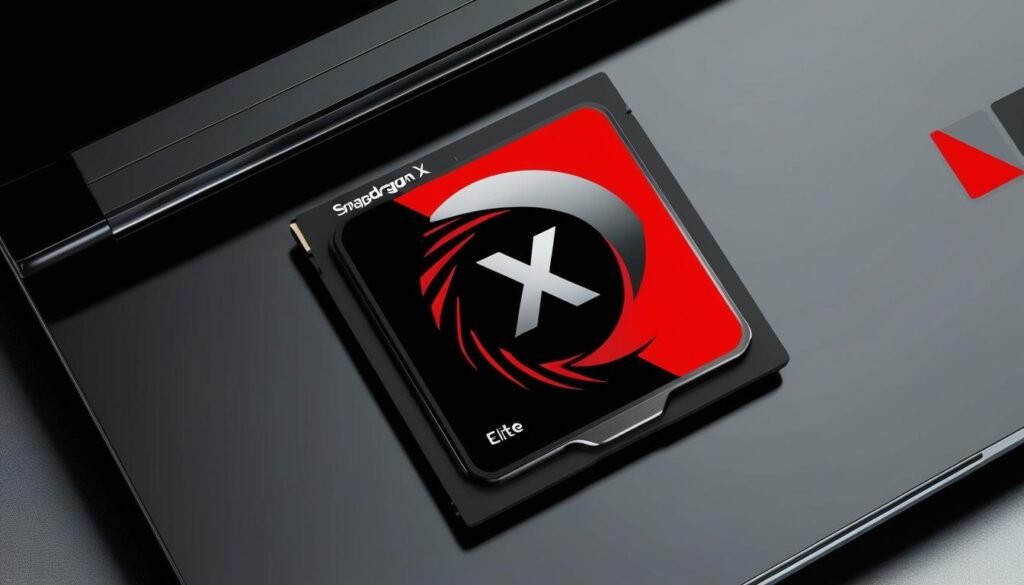Qualcomm’s new Snapdragon X Elite processors signal a transformative shift in computing, despite a rocky launch and ongoing competition in the market.
In a significant development for the personal computing landscape, Qualcomm has unveiled its Snapdragon X Elite processors aimed at Windows laptops, marking what many industry experts are deeming a pivotal moment in PC hardware evolution. Analysts have drawn comparisons to the launch of Intel’s 486 processors in 1989, which established the x86 architecture as the dominant force in computing. As this competition unfolds, Qualcomm’s Snapdragon chips signal a transformative shift in the market.
The initial rollout of the Snapdragon X Elite has been described as somewhat tumultuous. Microsoft branded machines using these processors as “Copilot+ PCs”, spotlighting their AI capabilities. However, the launch faced considerable backlash, resulting in Microsoft recalling its flagship feature. Leonard Lee, executive analyst at Next Curve, noted, “I think the messaging fell apart largely due to Microsoft having the snafu with Recall,” highlighting the challenges faced in navigating the introduction of the new chips.
Despite this rocky introduction, Snapdragon X Elite processors have earned favourable reviews for their performance relative to energy consumption. Lee remarked on the capabilities of the new chips, which enhance performance per watt, making them ideal for users seeking high efficiency alongside robust battery life. Anshel Sag from Moor Insights & Strategy also expressed enthusiasm for Qualcomm’s lower-cost Snapdragon X Plus chips, available in laptops such as the Lenovo IdeaPad 5x 2-in-1. He stated, “I think they’re going to kill it with that eight-core chip,” attributing the ability to achieve a previously unattainable performance level at a lower price point.
Looking forward, 2025 is anticipated to see a broader range of Snapdragon devices emerge, especially following CES 2025 in January, where manufacturers are expected to showcase an array of competitively priced Snapdragon-powered laptops. Speculation is also rife regarding a higher-end Snapdragon X Elite variant with additional processing cores, potentially enhancing its appeal even further.
However, Qualcomm’s current product line lacks support for discrete graphics, limiting its application in workstation and gaming environments. Analysts suggest that integrating support for discrete GPUs could facilitate the expansion into new markets, a claim supported by industry dynamics that indicate a growing demand for such capabilities.
As Qualcomm solidifies its position, other competitors are expected to step onto the stage. MediaTek and Nvidia are among the frontrunners exploring opportunities in the Arm PC market. Both companies possess existing familiarity with Arm architecture and are rumoured to be working on new chip collaborations. Sag pointed out that collaboration between MediaTek and Nvidia could be essential, particularly regarding graphics driver optimisation.
In parallel, programming shifts within tech giants are also noteworthy, particularly Google’s evolving strategy regarding ChromeOS. There are indications suggesting that Google aims to transform ChromeOS into a unified Android desktop experience. Should this occur, the combination of MediaTek’s affordable chipsets and AI features from the Pixel line could potentially provide a competitive alternative to Microsoft’s pursuits, despite the latter’s more publicised efforts with AI integration.
Despite the rise of Arm-based systems, analysts assert that x86 architecture will still hold relevance in the evolving market. Both Intel and AMD have demonstrated their capacity for competitive offerings within the x86 domain. Lee highlighted the advancements made by Intel’s Lunar Lake chips and AMD’s new Ryzen AI line, both of which remain competitive in terms of performance and battery efficiency.
In conclusion, the next few years promise to reshape the PC marketplace as multiple instruction sets vie for dominance. With projections for diversified computing options that benefit consumers, the competitive landscape is expected to foster innovation and lower prices. OEMs are also favourable towards the anticipated changes, with Sag acknowledging a level of innovation and experimentation that has yet to be seen in the industry, bringing forward prototypes and concepts that challenge traditional expectations.
Source: Noah Wire Services
- https://www.androidauthority.com/snapdragon-x-elite-vs-lunar-lake-3498491/ – Corroborates the differences in architecture between Snapdragon X Elite and Intel Lunar Lake, including the use of Arm and x86 architectures, and the unique version of Windows on Arm.
- https://www.androidauthority.com/snapdragon-x-elite-vs-lunar-lake-3498491/ – Discusses the performance and battery life of Snapdragon X Elite and Intel Lunar Lake, highlighting their ability to last through an entire workday without charging.
- https://www.youtube.com/watch?v=WOiBD5FJjAo – Provides a comparison of performance and power consumption between Snapdragon X Elite and Intel chips, including differences in gaming and thermal performance.
- https://www.laptopmag.com/laptops/windows-laptops/ive-been-a-windows-on-arm-user-for-years-snapdragon-x-elite-has-changed-everything – Details the improvements in performance and compatibility of the Snapdragon X Elite, including enhanced support for apps and improved efficiency.
- https://www.techpowerup.com/forums/threads/first-reviews-are-live-and-snapdragon-x-elite-doesnt-quite-deliver-on-promised-performance.323715/ – Highlights the performance benchmarks of the Snapdragon X Elite, including its strengths and weaknesses compared to Intel-powered laptops.
- https://www.androidauthority.com/snapdragon-x-elite-vs-lunar-lake-3498491/ – Addresses the limitations of Snapdragon X Elite, such as the lack of support for discrete graphics and compatibility issues with certain programs.
- https://www.laptopmag.com/laptops/windows-laptops/ive-been-a-windows-on-arm-user-for-years-snapdragon-x-elite-has-changed-everything – Mentions the potential for future Snapdragon devices and the anticipated impact of CES 2025 on the market.
- https://www.techpowerup.com/forums/threads/first-reviews-are-live-and-snapdragon-x-elite-doesnt-quite-deliver-on-promised-performance.323715/ – Discusses the need for integrating support for discrete GPUs to expand into new markets like workstations and gaming environments.
- https://www.androidauthority.com/snapdragon-x-elite-vs-lunar-lake-3498491/ – Notes the ongoing relevance of x86 architecture despite the rise of Arm-based systems, highlighting advancements by Intel and AMD.
- https://www.laptopmag.com/laptops/windows-laptops/ive-been-a-windows-on-arm-user-for-years-snapdragon-x-elite-has-changed-everything – Mentions the competitive landscape and the potential for innovation and lower prices as multiple instruction sets vie for dominance.
- https://www.youtube.com/watch?v=WOiBD5FJjAo – Highlights the innovation and experimentation by OEMs in response to the anticipated changes in the PC marketplace.
















